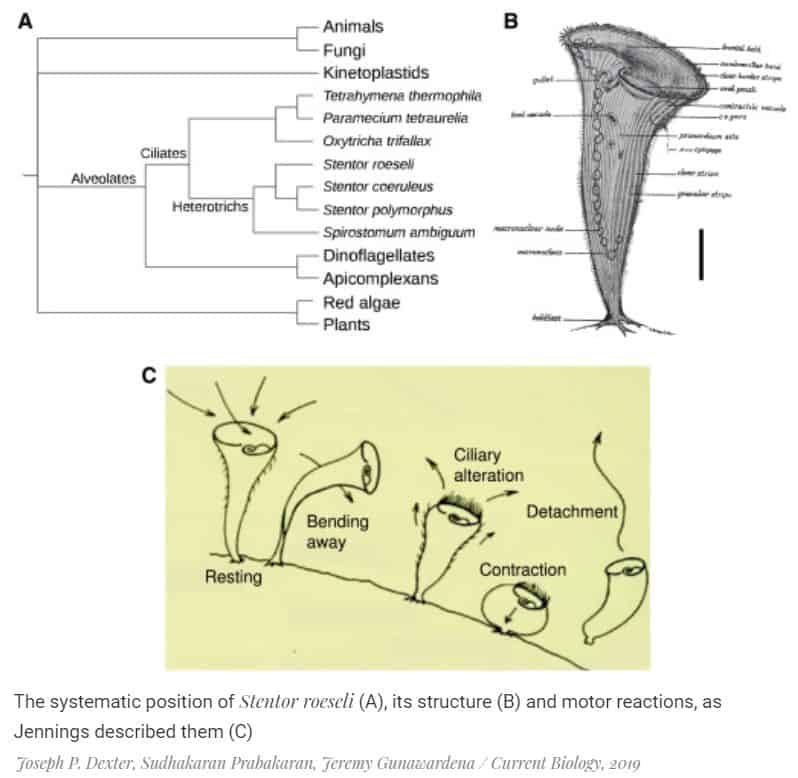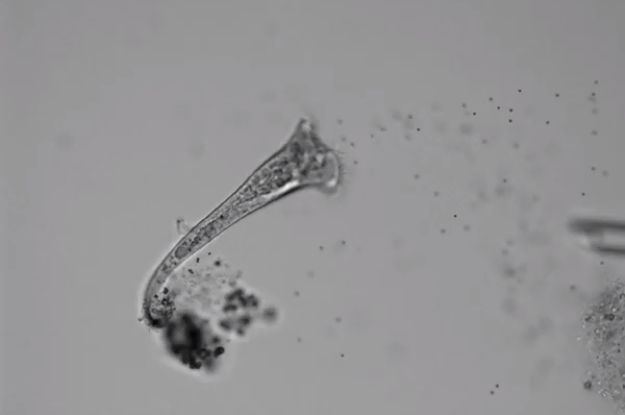A team of scientists have confirmed that sedentary ciliates in several ways react to external stimuli. A specific set of movements is applied depending on the situation, according to Current Biology. For a long time, unicellular were denied the ability to have such complex behaviour, as they do not have a nervous system that should provide different motor reactions.
Ciliates are one of the most complex single-celled eukaryotes (organisms whose cells have nuclei). They have many specialized organelles that are similar in function to multicellular organs. Most ciliates actively move with the help of cilia and even attached forms can move: compress and unclench the “leg” that hold onto the substrate, or even separate from it and swim to another place.
Many movements that make ciliates, you want to classify and if possible connect them with external events that triggered these movements. This work was done in 1906 by the American zoologist Herbert Spencer Jennings with Stentor Roeseli – a large sedentary infusion (this genus is also called trumpeters). Jennings directed at the attached single-celled stream of carmine powder particles and watched as the single-celled tries to avoid encountering this unpleasant stimulus: tilts in opposite from the flow side, change the direction of rotation of the cilia, so as not to accidentally capture inside the cell mouth powder, compresses or generally separates from the substrate and it’s floating away.

However, later experiments in the 1960s did not confirm Jennings ‘observations and the ciliates were again denied complex behaviours. Zoologists tried to reproduce the experiments on another type of ciliates – Stentor coeruleus. This trumpeter is somewhat different from Stentor Roeseli in the way of catching prey, which is why nowadays researchers from Dartmouth College led by Jeremy Gunawardena paid attention to it. In a new study, they decided to experiment specifically with S. Roeseli, since its reactions and those of S. Coeruleus most likely do not coincide.
Dartmouth biologists placed in a drop of water, where there were Stentors, a glass micropipette, through which polystyrene beads coated with sodium azide (NaN3) were blown. (They also tried to use Carmine, but practically no ciliates reacted to it.) The ciliates reactions were recorded on video. The stimulation for each infusoria was repeated several times, and a new release of beads was made only when the stentor returned to its resting state. The experiments were conducted for several months.
Gunawardena and colleagues found the same four reactions in Stentor Roeseli in response to a stream of unpleasant particle ciliates as Jennings did. The authors admit that for the stent, “shelling” with carmine and “shelling” with beads with sodium azide is not the same thing, but if so, it turns out that the unicellular has a common strategy for responding to the same – albeit different – stimulation. It is important that the complexes of movements most often went in some hierarchical sequence: the trumpeters rarely immediately separated from the substrate, but first tried to dodge the flow of beads or shrink. Again, there was no change in the direction of cilia movement after compression: it preceded an attempt at ciliates to decrease.
It is still unclear how the stentor chose what action to take, but the authors believe that this ciliator has some kind of decision-making system. They even considered the option that the unicellular reactions are similar to the answers of “Smart Hans” – a horse that supposedly correctly solved arithmetic and other problems, but actually perceived the owner’s prompts, invisible to the person himself. The bead feed was automatic: scientists only watched when the ciliates returned to their dormant state. As far as is known, unicellular organisms do not have structures that would allow us to monitor human actions and determine their significance. Therefore, it is unlikely in this case the effect of “Smart Hans” took place.
It turns out that Jennings’ experiments this time were able to be reproduced and that the trumpeters, at least Stentor roeseli, have rather complicated behavior – and in fact, it is most often attributed only to multicellular ones. The authors of the article suggest that it gave the ciliates an advantage in aquatic microecosystems.
